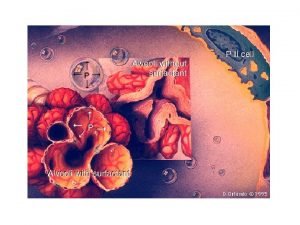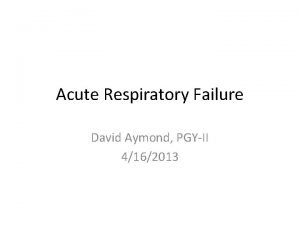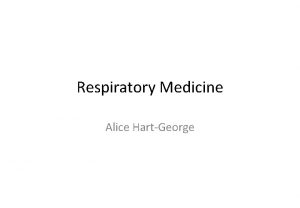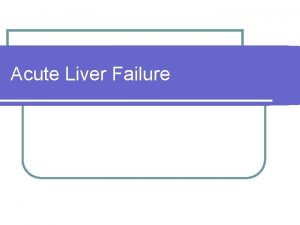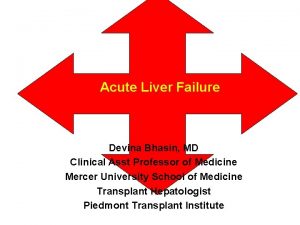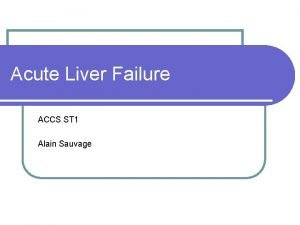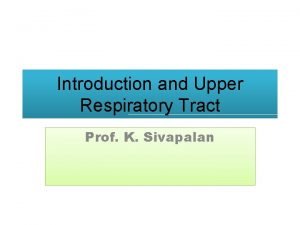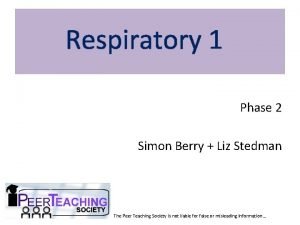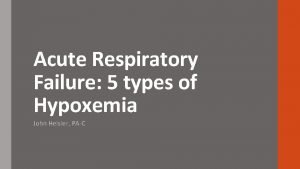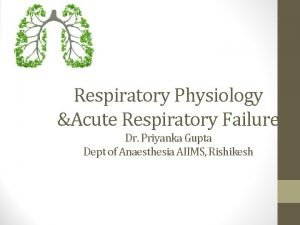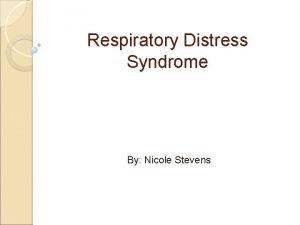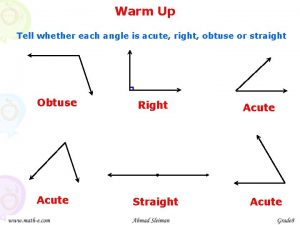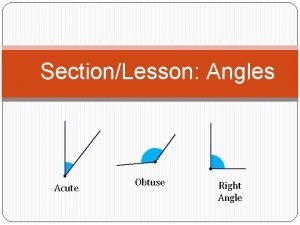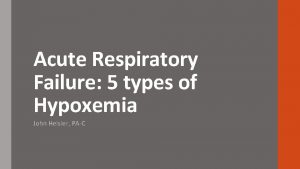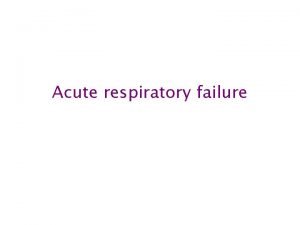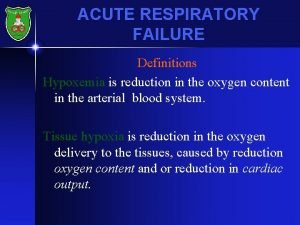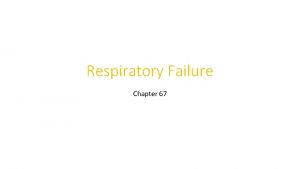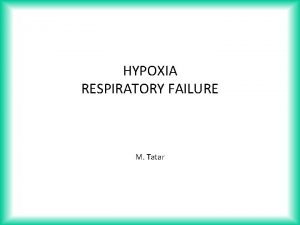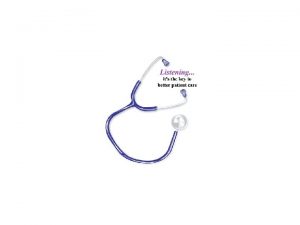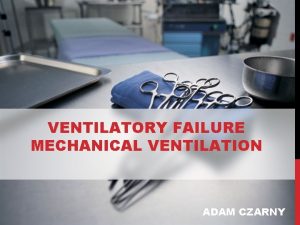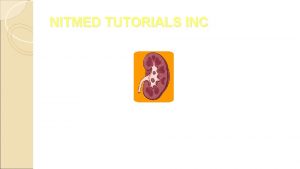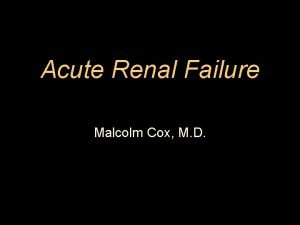Acute Respiratory Failure 5 types of Hypoxemia John































- Slides: 31

Acute Respiratory Failure: 5 types of Hypoxemia John Heisler, PA-C

Forms of Respiratory Failure • Acute Hypoxemic Respiratory Failure • Acute Hypercapnic Respiratory Failure • Difference between hypoxemia “blood” and hypoxia “cell” Pa. O 2: ABG Sp. O 2: O 2 monitor

Types of Oxygen

5 types of hypoxemia

THE 5 CAUSES OF HYPOXIA #1 – High Altitude #2 – Hypoventilation (Normal A-a gradient) #3 – Diffusion Disorder #4 – Shunt #5 – VQ Mismatch (High A-a gradient)

Case 1 You are a medical volunteer at Everest Base camp clinic (~16, 900 ft). A 27 year old man with no significant PMH, new climber presents with complaints of throbbing headache and shortness of breath x 1 day. On exam patient is tachypneic with bibasilar crackles. Tachycardic, Sp. O 2 85%. Remainder of exam normal.


s/p O 2

Diagnosis? Altitude Sickness!

A-a gradient aka the difference between alveolar and arterial oxygen 150


All about the alveolus! High A-a gradient: Lots of O 2 in Alveolus, not a lot in artery Low/Normal A-a gradient: Little O 2 in Alveolus thus little in artery

Young woman overdosed on antidepressants and alcohol Respiratory rate 8 breaths/min Arterial blood gas: p. H 7. 15, Pa. CO 2 71 mm Hg (9. 5 k. Pa), Pa. O 2 56 mm Hg (7. 5 k. Pa) in room air Why is this patient hypoxemic? Copyright 2016 Society of Critical Care Medicine Case Study 2 13

Which of the following is the most likely cause of hypoxemia in this patient? Hypoventilation Acidemia Alveolar hyperventilation Auto-positive end-expiratory pressure Copyright 2016 Society of Critical Care Medicine A. B. C. D. 14 14


Select all of the interventions that would be helpful in treating this patient’s hypoxemia. Copyright 2016 Society of Critical Care Medicine A. Administer supplemental oxygen. B. Prepare to initiate mechanical ventilation. C. Treat the patient’s overdose. D. Encourage the patient to breathe deeply. 16 16

THE 5 CAUSES OF HYPOXIA #1 – Low Patm (Normal A-a gradient) #2 – Hypoventilation #3 – Diffusion Disorder #4 – Shunt #5 – VQ Mismatch (High A-a gradient)

#3: Diffusion O 2 CO 2 interstitium 1 cell layer thick Impaired diffusion Responds to Oxygen

The pearl of clinical truth: Diffusion Dz • VERY wide differential for ILD: Environmental Drug-induced Autoimmune dz Infection Idiopathic Malignancy • Your job? GOOD H&P

#4: Shunt 70% SYSTEM 82. 5% 95% What’s the A-a gradient? What happens with O 2?

#4 Shunt • Two types of shunt: Anatomic “cardiac” Congenital Heart Defects ASD VSD PDA Physiologic “intrapulmonary” ARDS • Does not correct with O 2!

#5 CASE STUDY A 31 year old smoker presents to the ED with acute onset shortness of breath. Symptoms began ~2 hours prior to arrival. Syncopal event en route. She also endorses chest pain. T 98. 0 HR 125 BP 90/55 Sp. O 2 85% on 6 L NC.

A R L B

ABG 7. 56/20/56/24 p. H/CO 2/HCO 3


Diagnosis? Massive PE!

#5 VQ Mismatch • Most common cause of hypoxemia Pulmonary Embolism Pneumonia Pulmonary Edema COPD Normal Dead Space



Summary Cause of Hypoxia Remember! Altitude / low Patm Low alveolar oxygen A-a gradient. ↓A-a. Fully corrects w/ O 2 Hypoventilation Hypercapnia comes first Diffusion disorder Diffusion distance limited VQ mismatch MCC of hypoxia Shunt Anatomic or physiologic ↑A-a. Partially corrects w/ O 2 ↑A-a. O 2 WON’T CORRECT

Summary Cause of Hypoxia Disease states Altitude / low Patm Altitude sickness Hypoventilation OSA/OHS Opioid/drug overdose Encephalopathy (all comers) Neuromuscular weakness Diffusion disorder Interstitial lung disease (many types) VQ mismatch COPD/asthma PNA PE Pulmonary Fibrosis Pulmonary Edema Shunt Anatomic: ASD, VSD, PDA Physiologic: SCAPE, ARDS
 Hypoxemia vs hypoxia
Hypoxemia vs hypoxia Dead space vs shunt
Dead space vs shunt Type 1 resp failure
Type 1 resp failure Types of respiratory failure
Types of respiratory failure Treatments for acute renal failure
Treatments for acute renal failure Fhf
Fhf Acute liver failure criteria
Acute liver failure criteria Hepatic encephalopathy stages
Hepatic encephalopathy stages Acute vs chronic heart failure
Acute vs chronic heart failure Acute brain failure
Acute brain failure Failure to sense
Failure to sense Failure to sense
Failure to sense Ductile vs brittle fracture
Ductile vs brittle fracture Broncheols
Broncheols Type 1 respiratory failure
Type 1 respiratory failure Hypercapnic respiratory failure
Hypercapnic respiratory failure Blood gas
Blood gas Complications of respiratory failure
Complications of respiratory failure Respiratory zone of the respiratory system
Respiratory zone of the respiratory system Morphological forms of inflammation
Morphological forms of inflammation Local reliability protocols in dbms
Local reliability protocols in dbms Types of market failure
Types of market failure Types of market failure
Types of market failure Name 2 objects with acute angles
Name 2 objects with acute angles Chronic blood loss
Chronic blood loss Tell whether each type of angle is right acute or obtuse
Tell whether each type of angle is right acute or obtuse Goodpasture syndrome
Goodpasture syndrome Obtuse
Obtuse Acute bronchospasm
Acute bronchospasm What is scalene isosceles and equilateral triangle
What is scalene isosceles and equilateral triangle Right angle examples in real life
Right angle examples in real life Leg acute congruence theorem
Leg acute congruence theorem
